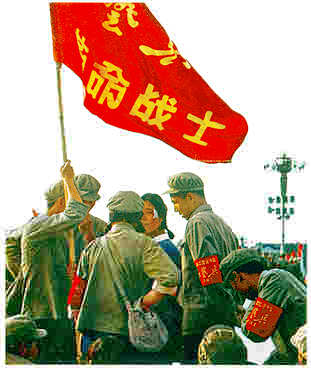A key aspect of the Soviet Union’s quest for true Communism was becoming waste-free and efficient. Every single resource was utilized for the common good of the state; this included people, materials, machines, and even nature. Unused land was waste, and waste had no place in the Party’s strategy.
Looking back, particularly with today’s heightened emphasis on preserving the environment, it is easy to see the ways in which these policies of brutal extraction from the land would lead to future consequences. The desiccation of the Aral Sea has not only caused serious environmental repercussions, but has also been linked to an increase in medical problems, such as cancer.
I was reading the excerpt on the Aral Sea thinking, “whew, so glad we know better now,” when I realized that thought was dead-wrong. We don’t really know any better. And the biggest environmental offender today? China, the other communist powerhouse from the 20th Century. Chinese cities have some of the worst air and water pollution ratings in the entire world, yet when it was approached with the Kyoto Protocol, which would require it to curb its actions that are so detrimental to the environment, it refused. China’s reasoning was that it was still a “developing nation” and shouldn’t be subjected to such environmental restraints—restraints that other, now-developed nations did not have to adhere to on their path to modernity. Russia would be one such example.
When using this China-parallel it would be easy to conclude that destroying the environment to the states’ benefit is a common facet among Communist states. I’m not sure I can soundly make that assertion, but I don’t think it is a coincidence that the two largest Communist (or near-Communist) countries have committed some of the worst atrocities towards the environment.

 Perestroika and glasnost were terms Gorbachev used to embody his cultural reforms and openness to Western influence. The Chinese, too, had a period of openness. In 1956 Mao said that, “The policy of letting a hundred flowers bloom and a hundred schools of thought contend is designed to promote the flourishing of the arts and the progress of science.” This “100 Flowers Movement” was ended in 1957 with political persecutions. Both Communist powers handled political dissonance in the second half of the 20th century differently, with the USSR embracing and the Chinese silencing controversy. Though, to look at it all now, the USSR has been disbanded and China is still heavily controlled by a limited ruling class.
Perestroika and glasnost were terms Gorbachev used to embody his cultural reforms and openness to Western influence. The Chinese, too, had a period of openness. In 1956 Mao said that, “The policy of letting a hundred flowers bloom and a hundred schools of thought contend is designed to promote the flourishing of the arts and the progress of science.” This “100 Flowers Movement” was ended in 1957 with political persecutions. Both Communist powers handled political dissonance in the second half of the 20th century differently, with the USSR embracing and the Chinese silencing controversy. Though, to look at it all now, the USSR has been disbanded and China is still heavily controlled by a limited ruling class.